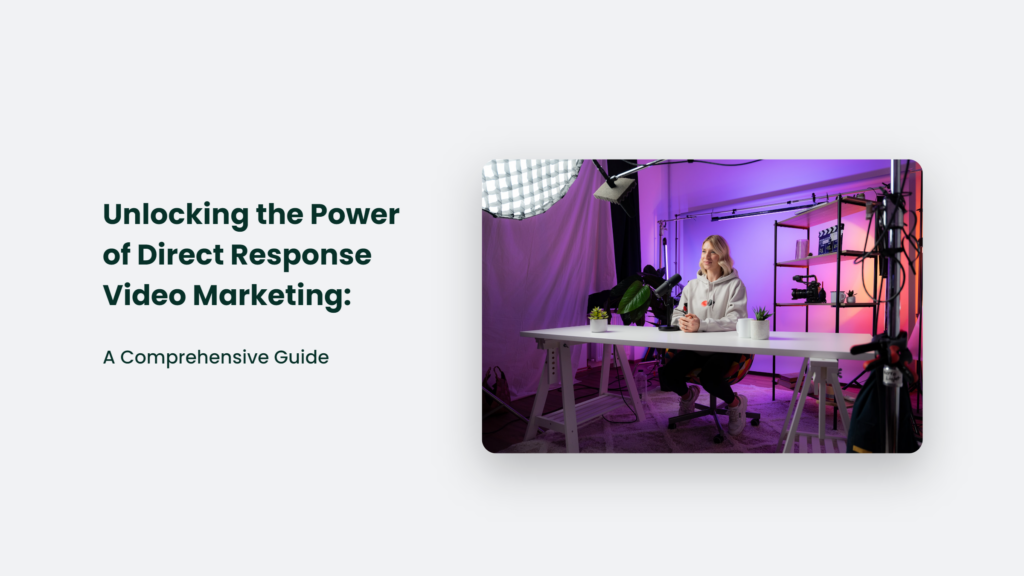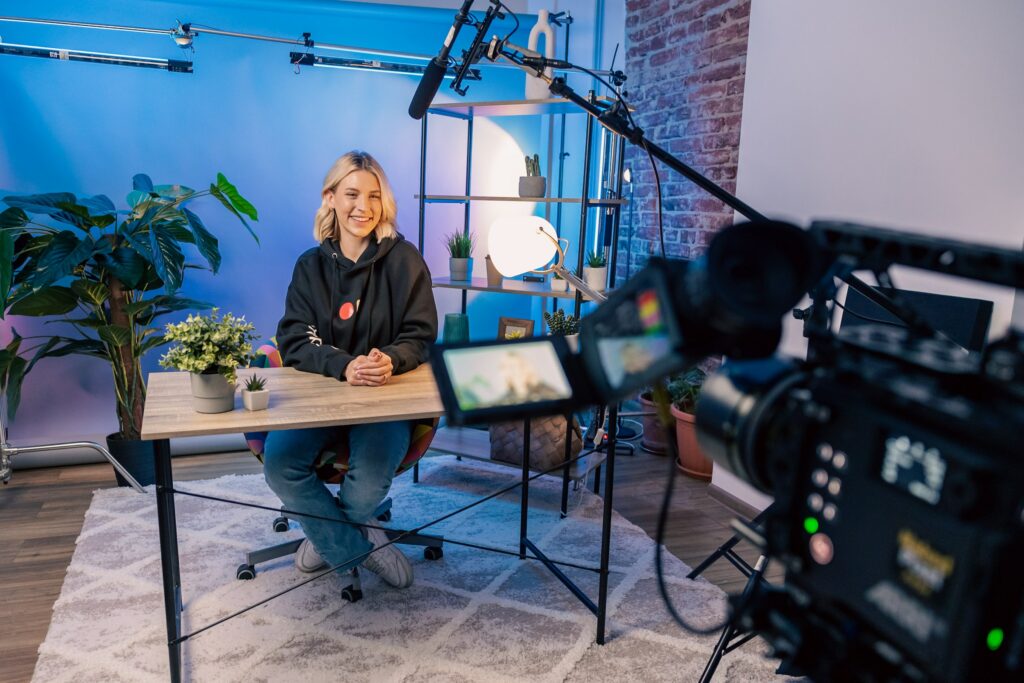Direct response video marketing is one of the most effective marketing strategies for businesses looking to connect with their audience and drive sales. In this blog post, I’ll guide you through the essentials of direct response video marketing and show you how to create videos that get results.
What is Direct Response Video Marketing?
Direct response video marketing is a type of video marketing that aims to elicit a direct response from the viewer. It typically includes a clear call-to-action (CTA) that encourages the viewer to take a specific action, such as purchasing, signing up for a newsletter, or visiting a website.
The key to successful direct response video marketing is to create engaging, relatable, and tailored content for your target audience. With the right approach, direct response video marketing can help you build trust with your audience, drive conversions, and grow your business.

Why is Direct Response Video Marketing Effective?
There are several reasons why direct response video marketing is so effective. Firstly, video is a highly engaging format that is well-suited to capture and retain your target audience’s attention. You can create videos that connect with your audience emotionally by incorporating elements such as humour, storytelling, and personal anecdotes.
Another key advantage of direct response video marketing is that it allows you to reach a large audience with a single video. Whether you’re promoting your products or services on social media, YouTube, or your website, video is a highly shareable format that can help you reach a wider audience than other marketing channels.
How to Create a Direct Response Video
Creating a direct response video is a multi-step process that involves planning, filming, and post-production. Here are the steps to create a direct response video:
Define Your Objective
Before you start filming, it’s important to define your objective. What action do you want the viewer to take after watching your video? It could be anything from purchasing to signing up for a service.
Identify Your Target Audience
Next, you’ll need to identify your target audience. Who are you trying to reach with your video? What are their interests, needs, and desires? Understanding your target audience is key to creating a video that resonates with them and motivates them to take action.
Plan Your Script
Once you clearly understand your objective and target audience, it’s time to plan your script. Your script should be engaging and informative and include a clear call to action. You’ll also want to include any key points or benefits that will help to sell your product or service.
Choose Your Visual Style
Now that you have your script, it’s time to choose the visual style for your video. Choose a style consistent with your brand and appeals to your target audience. It could be anything from a live-action video to an animated explainer video.
Film Your Video
With your script and visual style in place, it’s time to film your video. Use high-quality equipment and lighting to ensure the best possible results. You’ll also consider hiring a professional videographer if you’re not confident in your filming abilities.
Edit and Add Music
Once you’ve filmed your video, it’s time to edit and add music. Your editing should be tight, engaging, and include any special effects or animations that will help bring your video to life. With many video editing tools available online, you can choose any free video editor available. You’ll also want to choose a background music track that fits the mood and tone of your video.
Add a Call-to-Action
The final step is to add a call-to-action to your video. It could be anything from a pop-up message to a button that takes the viewer to your website. Make sure your call-to-action is clear, concise and motivates the viewer to take action.
By following these steps, you’ll be well on your way to creating an effective direct response video that generates leads and sales for your business.
Incorporating Direct Response Video Marketing into Your Strategy

Now that you understand the power of direct response video marketing, it’s time to start incorporating it into your marketing strategy. Here are some tips to help you get started:
Identify Your Target Audience
The first step in any successful marketing campaign is identifying your target audience. Who are you trying to reach with your direct response video marketing campaign? What are their pain points, interests, and needs? Understanding your target audience will help you create a video that resonates with them and drives results.
Choose the Right Platform
Next, you’ll want to choose the right platform to host your direct response video. Many options include YouTube, Vimeo, Facebook, and Instagram. Consider where your target audience spends the most time and choose the platform that effectively reaches them.
Plan Your Video Content
Once you’ve identified your target audience and chosen your platform, it’s time to plan your video content. Your video should be short, to the point, and focus on the problem your target audience is facing. Include a strong call-to-action that encourages your audience to take the next step, whether visiting your website, signing up for your newsletter, or purchasing.
Create an Irresistible Offer
Your direct response video marketing campaign should include an irresistible offer that motivates your target audience to take action. It could be a discount, a free trial, a special report, or a limited time offer. Your offer should be something your target audience can’t resist and will drive them to act.
Measure and Optimize Your Results
Finally, measure and optimize your results. Use analytics tools to track the success of your direct response video marketing campaign and make changes as needed. Test different elements of your video, such as the call-to-action, offer, and messaging, to see what resonates with your target audience and drives the best results.
What is the difference between direct response video marketing and other types of video marketing?
Direct response video marketing differs from other types of video marketing in that it focuses on eliciting a direct response from the viewer. It typically includes a clear call-to-action (CTA) that encourages the viewer to take a specific action, such as purchasing, signing up for a newsletter, or visiting a website.
Direct response video marketing aims to drive conversions and generate leads, while other types of video marketing, such as brand awareness or content marketing, aim to build brand recognition, educate viewers, and engage with them more subtly. Direct response video marketing is more results-driven, while other types focus on building relationships and establishing a connection with the audience.
Frequently Asked Questions
How can I measure the success of my direct response videos?
To measure the success of your direct response videos, you can track metrics such as conversion rates, click-through rates, and engagement rates. You can also use tools such as analytics and heat mapping to get a better understanding of how viewers are interacting with your videos.
Why is direct response video marketing effective?
Direct response video marketing is effective because it is a highly engaging format that allows businesses to connect with their target audience and drive conversions. It is also highly shareable, making it an effective way to reach a large audience.
The Bottom Line:
In conclusion, direct response video marketing is a powerful tool for businesses looking to connect with their audience and drive sales. Creating engaging and relatable videos tailored to your target audience can build trust, increase conversions, and grow your business. So get creative, and start making videos that make an impact! Whether you’re a seasoned marketer or just starting, by following the tips outlined in this post, you’ll be well on your way to creating effective direct response videos that get results.




